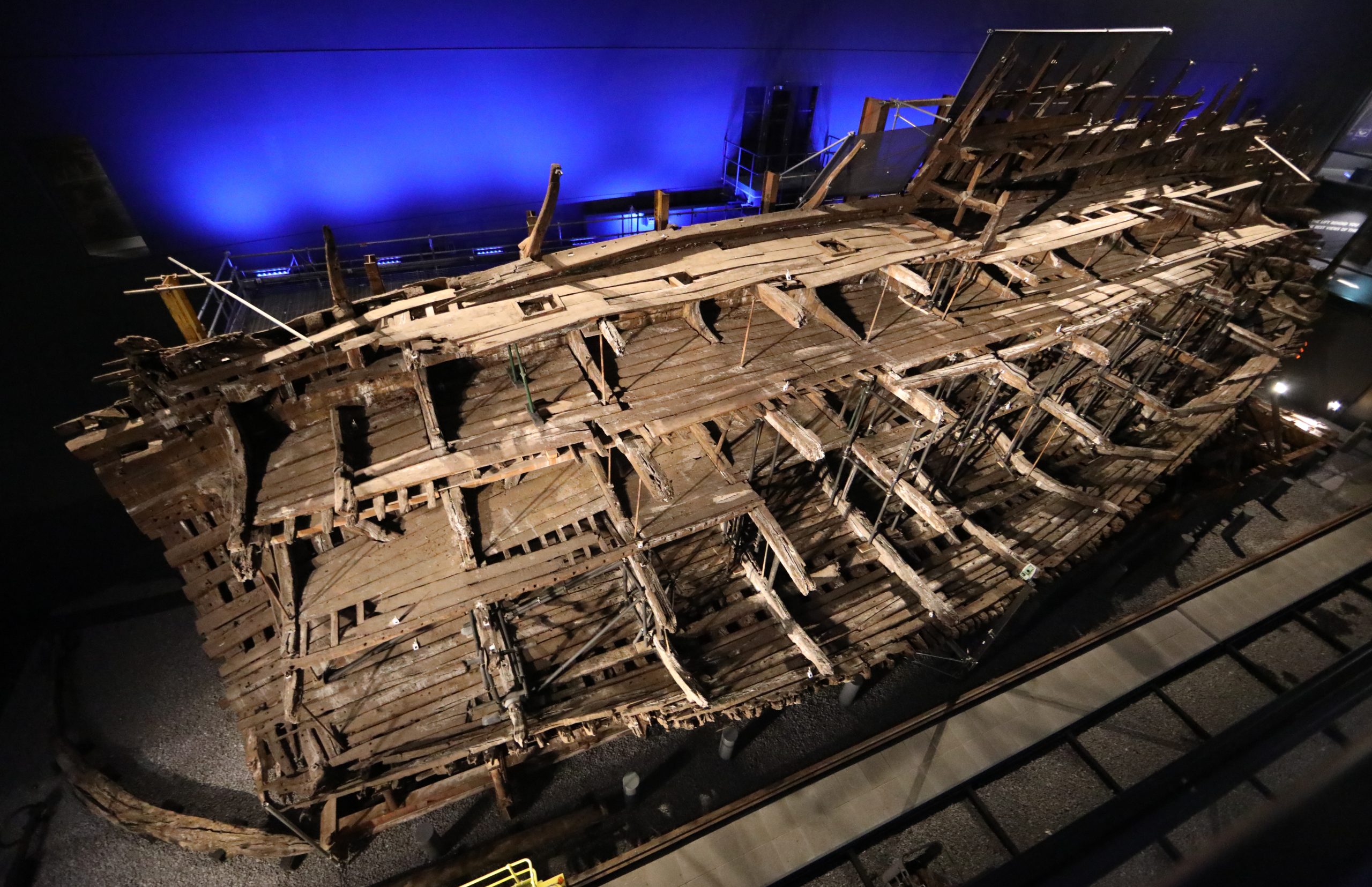The Mary Rose shipwreck is an iconic piece of maritime history that has fascinated people for centuries. This Tudor warship served in King Henry VIII's navy, but met a tragic end in 1545 when it sank off the coast of England. However, the ship's discovery and excavation in the 20th century have allowed experts to learn a great deal about the vessel and the people who lived and worked on board. In this article, we will explore 10 fascinating facts about the Mary Rose.
Dive into the History of Henry VIII’s Ill-Fated Warship
The Mary Rose shipwreck is a captivating historical relic that has captured the imaginations of maritime enthusiasts and historians alike. This 16th-century English warship, once the pride of King Henry VIII’s fleet, met a tragic end, but its legacy lives on. In this article, we’ll explore ten incredible facts about the Mary Rose shipwreck, and the secrets it continues to reveal about the Tudor era.
-
The Sinking of the Mary Rose
The Mary Rose sank on July 19, 1545, during the Battle of the Solent between the English and French fleets. The exact cause of the sinking remains a mystery, but it is widely believed that a gust of wind caused the ship to heel, allowing water to enter the open gunports. This, combined with possible overloading and instability, led to the swift capsizing and sinking of the vessel, with the loss of approximately 500 crew members.
-
Rediscovery
The wreck of the Mary Rose was rediscovered in 1971 by British diver Alexander McKee. From 1979 to 1982, a team of archaeologists, divers, and other specialists conducted an extensive underwater excavation, bringing about 19,000 artifacts and the remains of the ship’s hull to the surface. This marked the largest underwater archaeological excavation in history at the time.
-
The Mary Rose Museum
The recovered artifacts and preserved hull are now on display at the Mary Rose Museum in Portsmouth, England. The museum, which opened in 2013, offers a unique glimpse into the life of Tudor sailors and the technology of the time, showcasing a vast array of items, from weapons and navigational tools to personal belongings and clothing.
-
The Ship’s Construction and Dimensions
The Mary Rose was built between 1509 and 1511 in Portsmouth. Measuring approximately 32 meters (105 feet) in length and 12 meters (39 feet) in width, the ship had an estimated tonnage of 500 tons. It was a carrack-type warship, equipped with a combination of gun decks and rowing capabilities, designed to be agile and effective in naval combat.
-
The Mary Rose’s Arsenal
At the time of its sinking, the Mary Rose carried an impressive array of weaponry. The ship’s arsenal included a mix of long-range guns, such as wrought-iron breech-loading cannons, and short-range anti-personnel weapons, like the cast-bronze muzzle-loading guns. In total, the vessel boasted around 91 guns, a formidable array for the period.
-
Unique Preservation Conditions
The Mary Rose wreck site provided ideal conditions for the preservation of organic materials, which are usually not found in most archaeological sites. The ship’s remains were buried under a layer of silt and clay, creating an oxygen-free environment that slowed the decay of organic matter. As a result, numerous artifacts made of wood, leather, and textiles were preserved, offering rare insights into the Tudor period.
-
The Crew of the Mary Rose
Recent research has shed light on the crew members who perished aboard the Mary Rose. Forensic analysis of the recovered skeletal remains suggests a diverse crew, with men of various ages and origins. Some of the individuals were found to have suffered from various health conditions, such as arthritis and scurvy, while others showed signs of previous battle injuries.
-
The Ship’s Mascot
One of the most intriguing finds from the Mary Rose wreck is the remains of the ship’s mascot, a small dog named Hatch. This terrier-like breed likely served as a companion and rat-catcher aboard the vessel. Hatch’s remains were found close to the sliding door of the carpenter’s cabin, suggesting that the dog may have belonged to the ship’s carpenter.
-
Conservation Efforts
The conservation of the Mary Rose’s hull and artifacts has been an ongoing process since their recovery. The hull was initially sprayed with chilled water to prevent decay, followed by a 19-year-long treatment with polyethylene glycol (PEG), a substance that replaces water in wood cells and prevents collapse. The hull was then air-dried for several years before being placed on display in a climate-controlled environment at the museum.
-
The Ongoing Legacy of the Mary Rose
The Mary Rose continues to be a valuable source of information for historians and archaeologists. The shipwreck and its artifacts provide unique insights into the lives of Tudor sailors, warfare, and shipbuilding techniques of the time. The ongoing research and conservation efforts surrounding the Mary Rose ensure that this remarkable piece of history will continue to captivate and educate future generations.
The Mary Rose
The Mary Rose shipwreck remains one of the most significant and fascinating maritime archaeological discoveries of our time. From its tragic sinking to its incredible preservation, the story of the Mary Rose offers an unparalleled glimpse into the world of 16th-century naval warfare and the lives of those who sailed aboard this ill-fated vessel. As we continue to uncover the secrets of the Mary Rose, we gain a deeper understanding of the Tudor era, ensuring that the legacy of this remarkable ship lives on.
PLEASE READ: Have something to add? Visit Curiosmos on Facebook. Join the discussion in our mobile Telegram group. Also, follow us on Google News. Interesting in history, mysteries, and more? Visit Ancient Library’s Telegram group and become part of an exclusive group.

